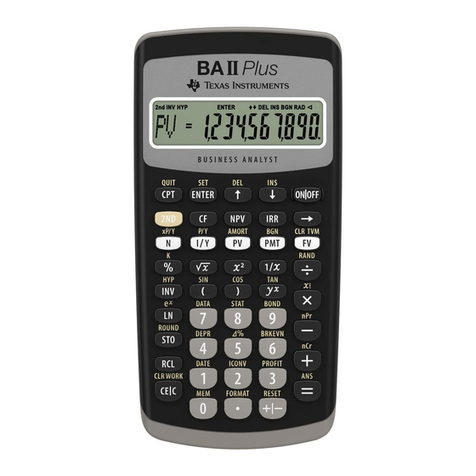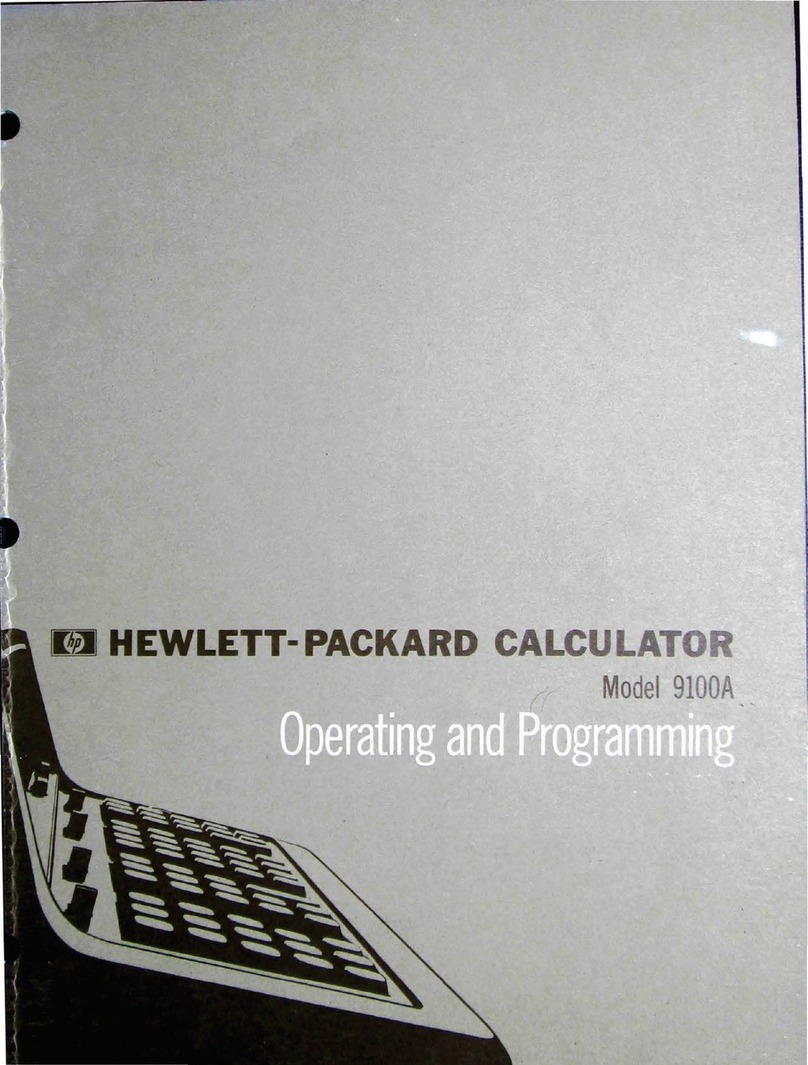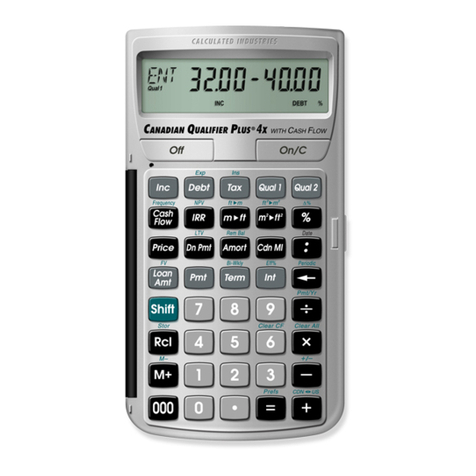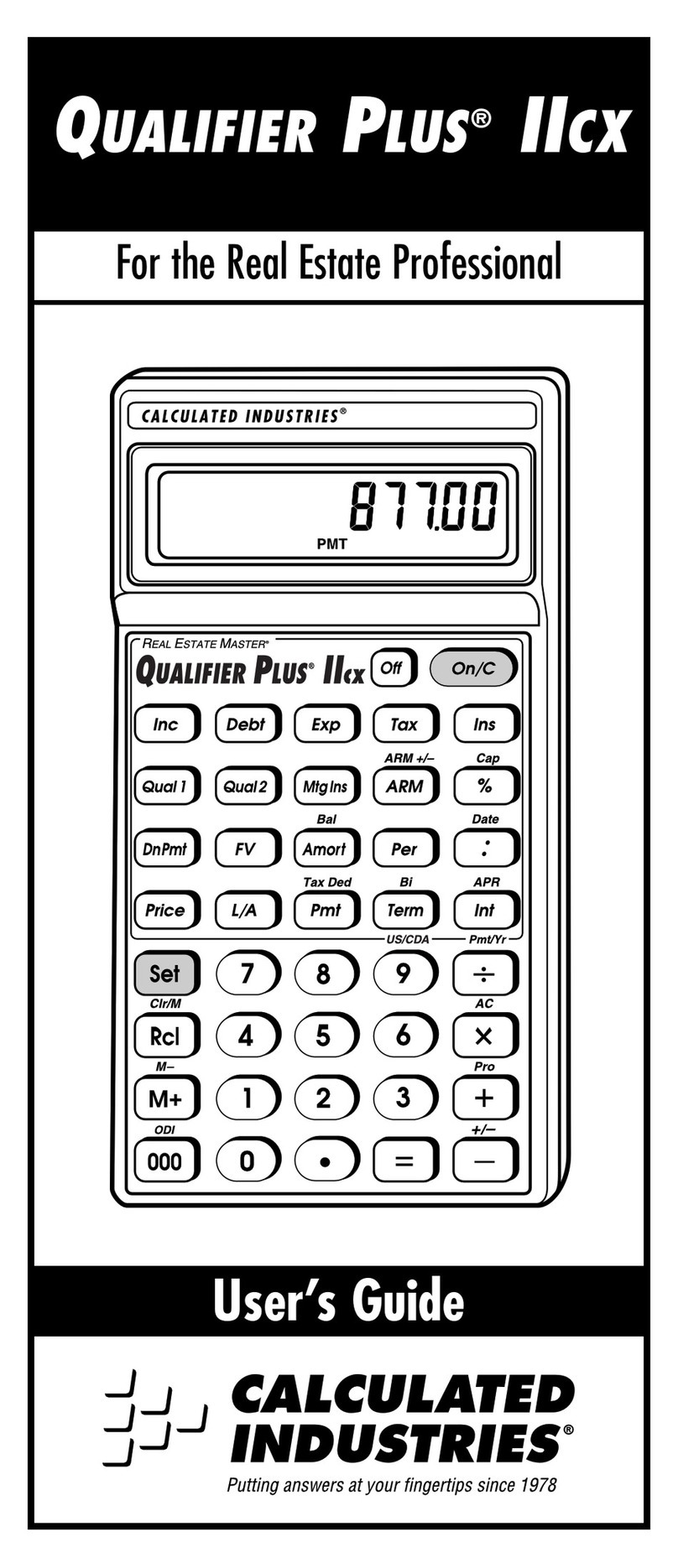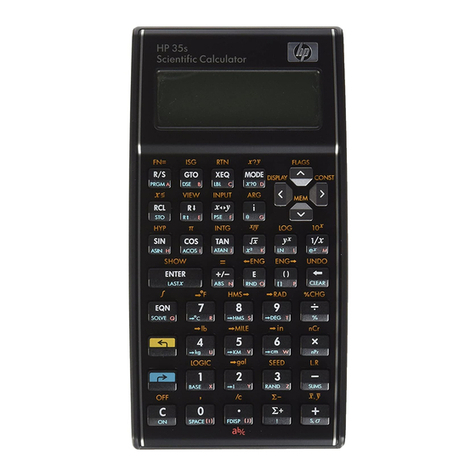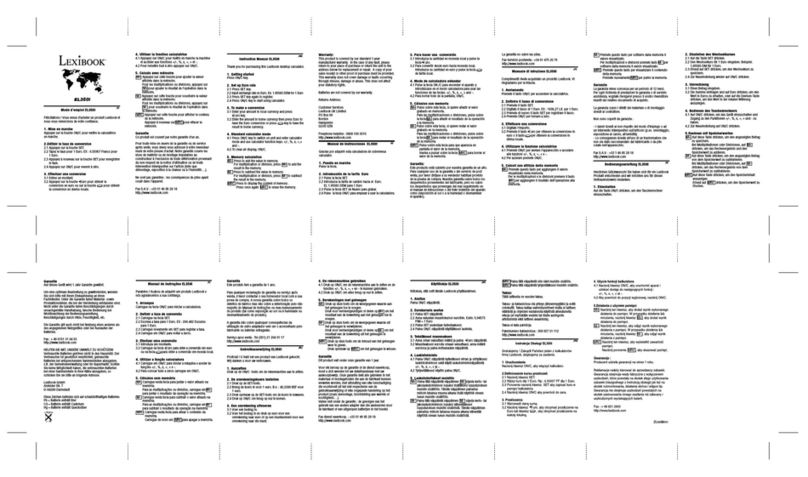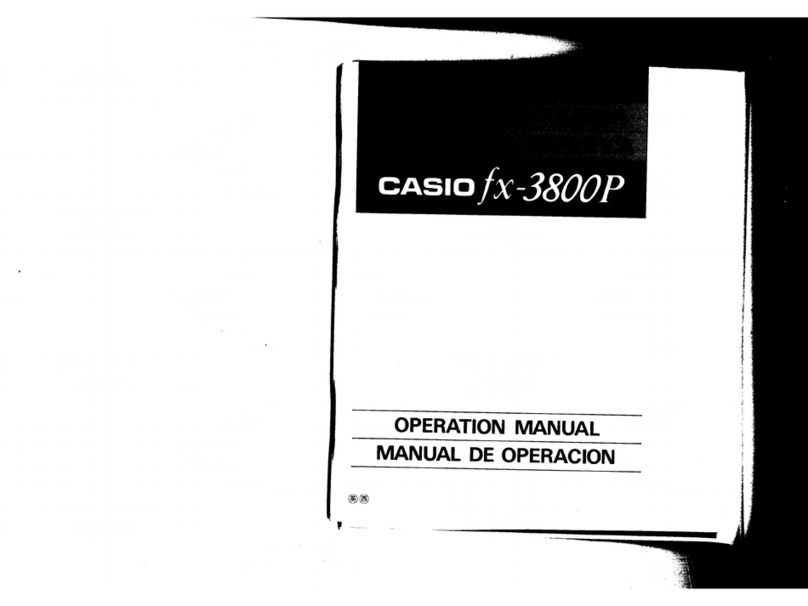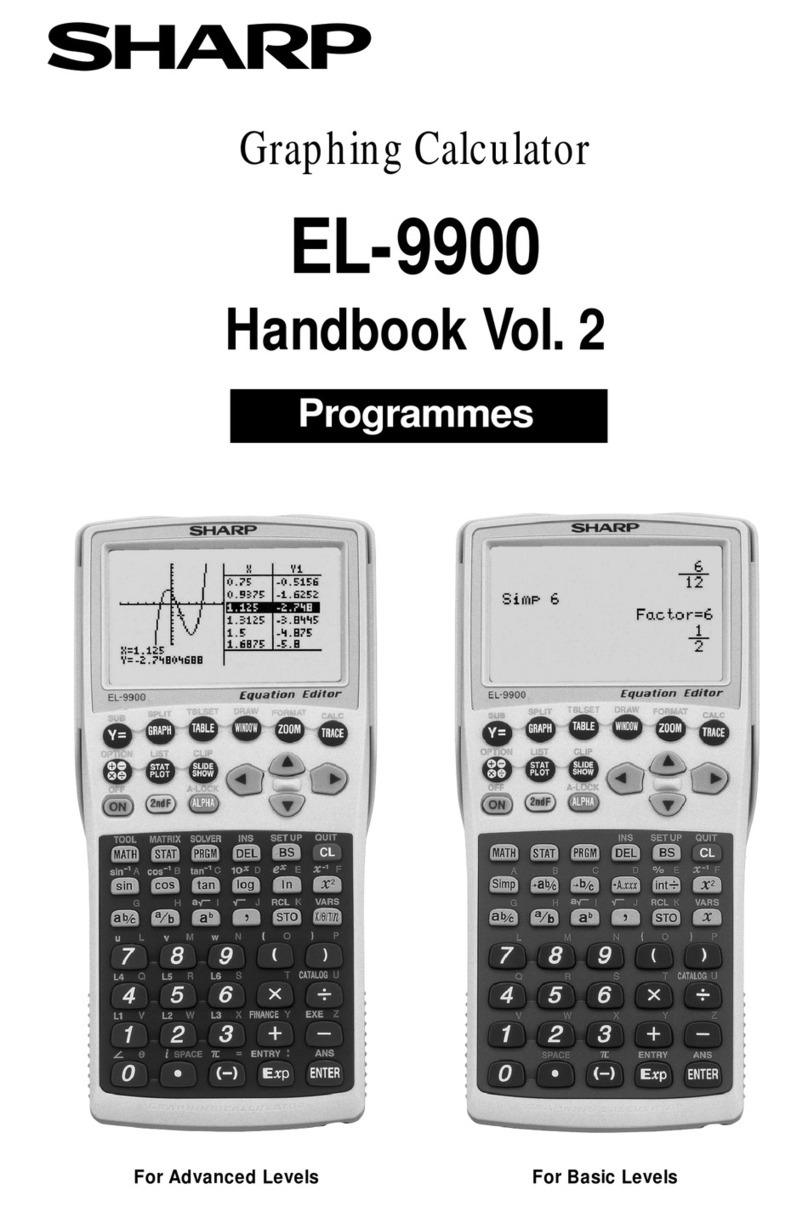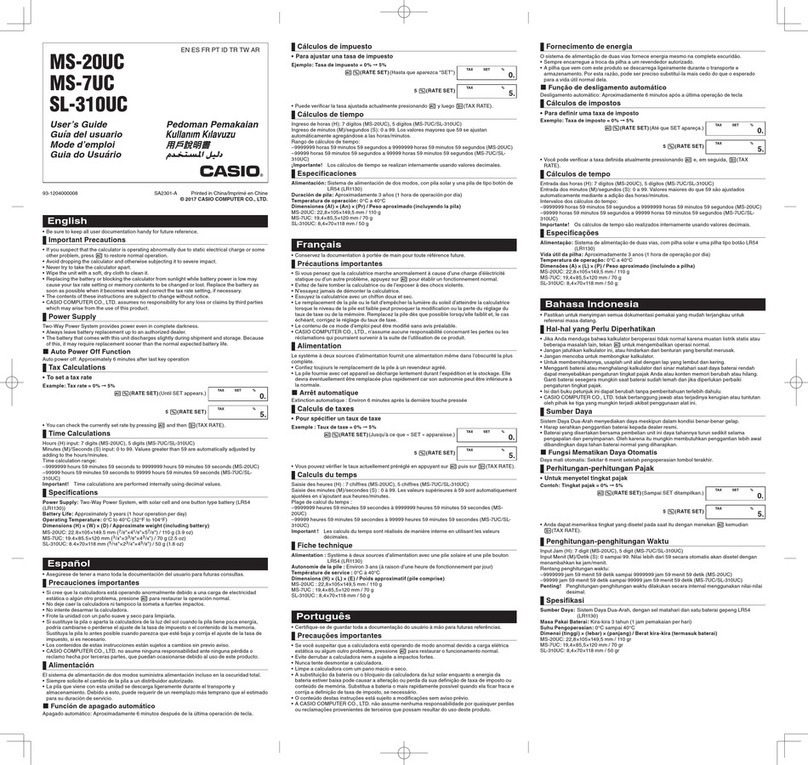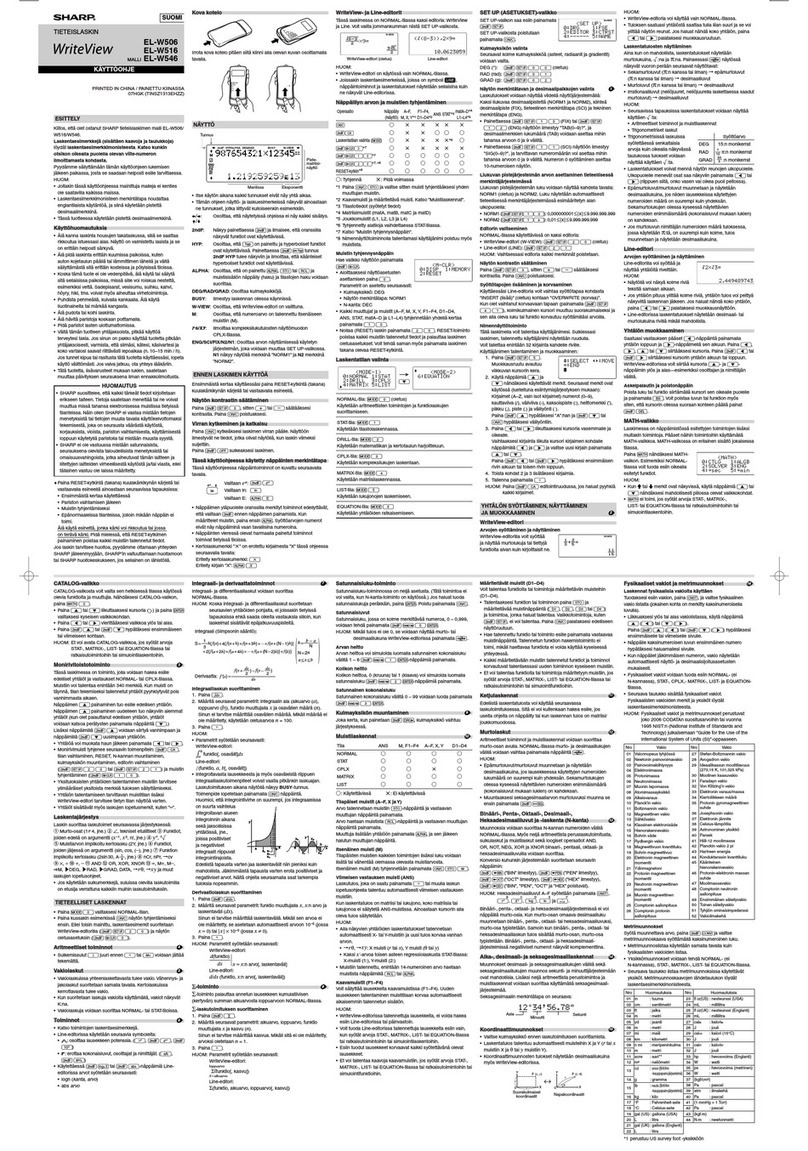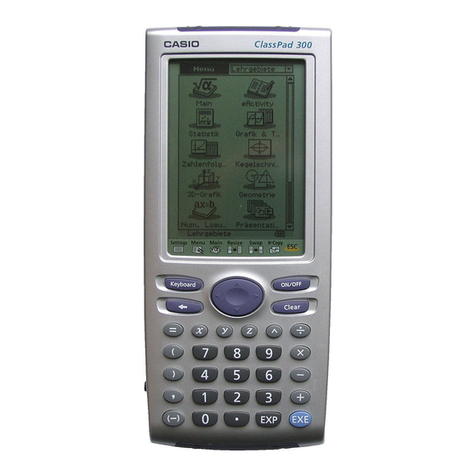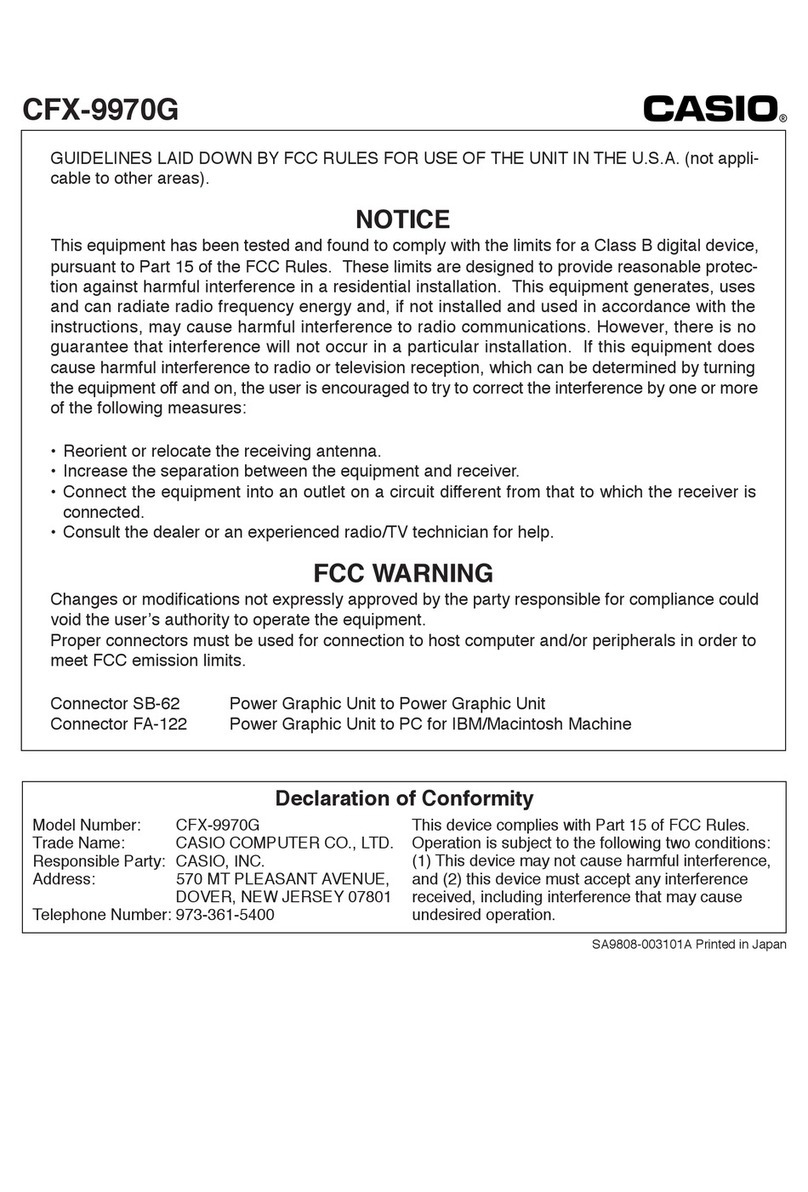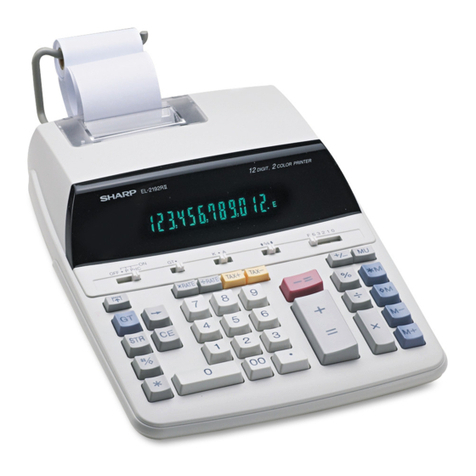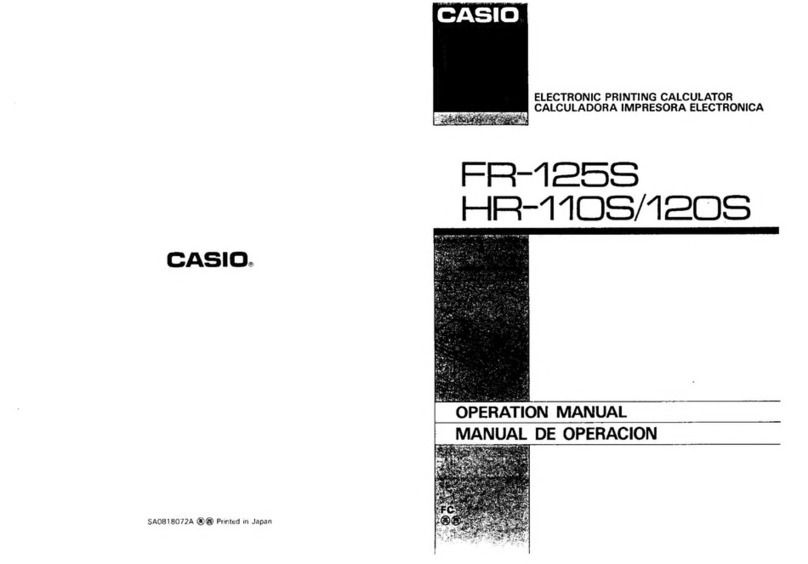
Key
in Display
DIG 7 ENTER
124000
DUP
123751
(=
123456 + 295)
The DIG setting will remain until changed deliberatelyoruntil
the CLEAR key
is
pressed, which causes the setting to revert
to default. Turning the calculator off does not affect the set-
ting.
USING
MEMORY
Everynumber used
in
a calculation
is
put on the stack auto-
matically, and the stack must emptied when it becomes full.
However, numbers must be specificallystored
in
one of the
12 memory locations and they stay there until specifically
cleared with either
ClM,
which clears
all
memory locations,
or CLS, which clears a specified memory storage location.
Contents of memory can
be
recalled at any time either by
you
or
by a program that you have entered
in
the
f1
,
f2,
and
f3,
user-definable function keys.
Data stored
in
memory is not affected by turning off the HHC
or by pressing CLEAR once. However, pressing CLEAR
twice to access the HHC primary menu and other HHC
applications will destroy the contents of
all
12 memory loca-
tions.
To familiarize yourself with the storage function,
run
through
the following example. Either key
in
a new number to store
or use the number
on
top of the stack that is displayed.
Key
in
Display
4 4
~
3.141592854
MUl
12.58837081
SHIFT STO TYPE
NUMBER
(1-12):
6 TYPE
NUMBER
(1-12):8
ENTER
12.58837081
To
verify entry, recall the number from storage:
Key
in
Display
TYPE
NUMBER
(1-12)
6 ENTER
12.58837081
fI
"
ft
w
.~
ERRORS AND WARNINGS
.~
Attempting calculations with invalid parameters will result in
.~
error messages. These can occur in the following two situa-
tions.
e;,.
/IIegal operation-if you violate the constraints of the float-
e
~
ing-point system
in
your calculations or if you use math-
(f
.,
ematical functions with incorrect arguments. For example,
raising 2 to the power 10000 is prohibited, because 10000
is too large
an
argument, and the result exceeds the max-
imum machine-representable number (Section
6).
Similarly,
~
tf
•
e
.~
division by zero is not toleiated.
e
~
Accuracy Bound -jf
an
argument presented to a routine
f!;
~
results
in
a function value considered to
be
too inaccurate.
For example, sine routine arguments should be less than
~
~
102942 radians
in
absolute value. This
is
because n times
~
...
~
is used to reduce the argument; if the argument
is
large,
~
,.
it is nearly n times
~
(being identical to it to a number of
significant digits). Then, in subtraction, these identical digits
~
" are lost. The sine approximation
is
tailored for arguments
in
~.
fA)
the
(OJ~/2)
range, so that the reduced argument will
be
less
....
fIJi
significant than was the original argument by too large
an
~
I)
amount; the result cannot be as accurate
as
desired, since
the argument was slightly altered during reduction. The
~
IIiJI bounds
on
the argument domains presented in Section 7
@
...
were chosen so that the floating-point arithmetic system
@ II') could be fully exploited by the algorithms used. Users are
~.
'!It
protected from results which may
be
"less than accurate"
~
because of arguments that are too large to be accurately
~
reduced.
e'
~~
In
both overflow and accuracy bound,
''''J,
e:
•
an
"ERROR
n"
message is displayed. Tables 7 and 8
e
~
discuss the meanings for the various values of
n.
Usethe
e:
~
CANCEL key to remove the message from the LCD;
e
"')
• the same number of inputs
is
dropped from the stack
as
? would be appropriate if the operation succeeded;
?
II
the resultant top stack entry (an invalid-floating point
~
number)
is
automatically dropped; and
~
• other stack entries and user memory are unchanged.
~
.....
~
There are other situations in which warning messages are
given. Forexample,
an
attempt to execute
an
instruction that
~4'.
would underflowthe stack causes abeep; neitherthe display
,4\ nor the stack is changed. When the maximum stack height
of 10
is
reached, the HEIGHT WARNING message Is dis-
•
"
"'"
~.
II'
2·7
